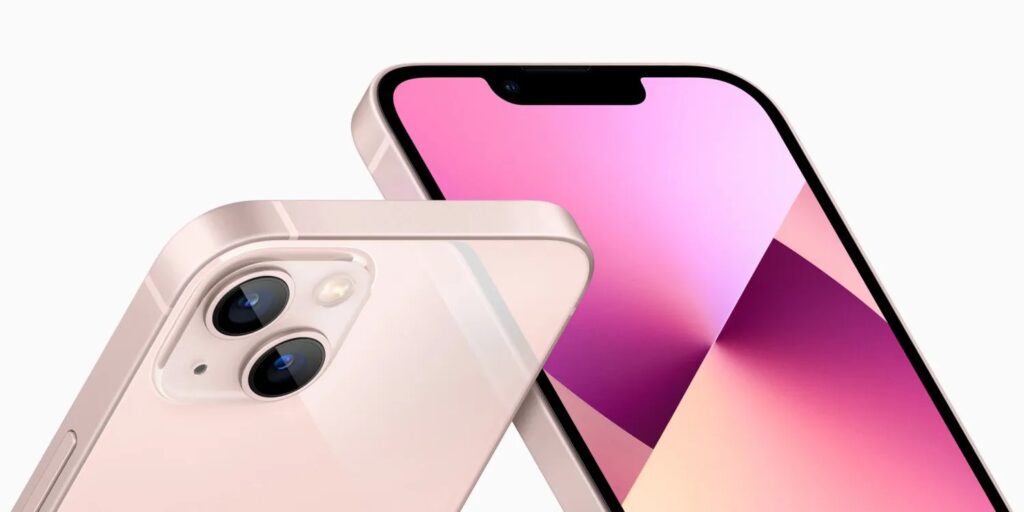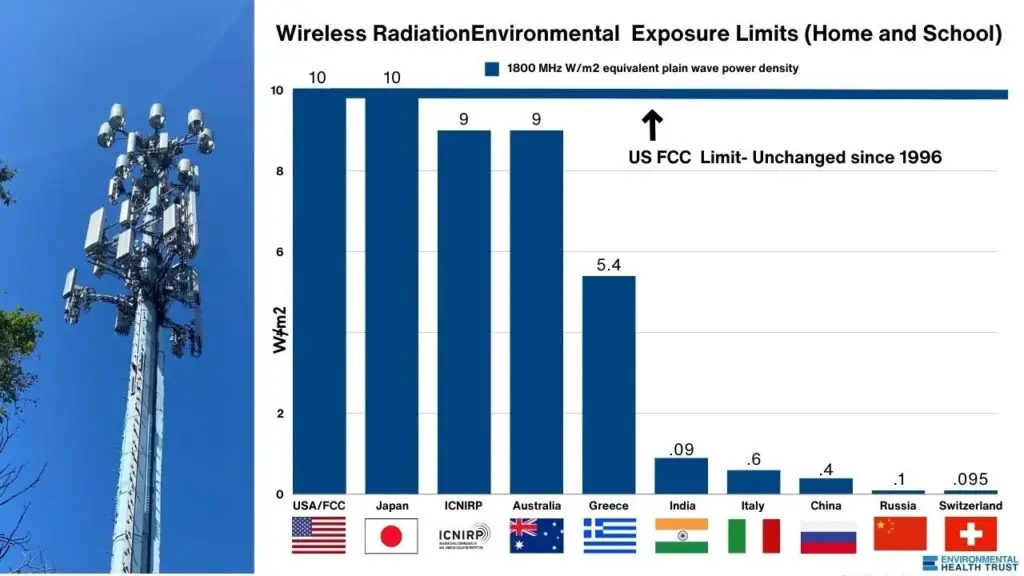Apple’s iPhone SE 4 has sparked excitement with its upgraded features, including a 48MP camera, OLED display, and the company’s first in-house 5G modem. This new iteration solidifies Apple’s commitment to staying competitive in the mid-range market, a space dominated by Android brands like Samsung and Google.
However, as we celebrate these advancements, it’s essential to focus on a less-discussed aspect of smartphone innovation: electromagnetic radiation and its long-term health implications. In this article, we’ll explore the iPhone SE 4’s exciting new features, examine SAR levels and health risks, and discuss global regulatory actions like France’s ban of the iPhone 12. We’ll also delve into solutions for mitigating EMF exposure, including my go-to choice, Aires Tech.
iPhone SE 4: Where Affordability Meets Innovation
Apple’s SE series has long served as an affordable gateway into the Apple ecosystem. The iPhone SE 4 continues this tradition with major upgrades:
- Camera Upgrades: A 48MP main camera and 12MP front camera rival those found in higher-end models like the iPhone 16 series.
- OLED Display: Transitioning from a 4.7-inch LCD to a 6.1-inch OLED panel delivers sharper visuals and energy efficiency.
- In-House 5G Modem: Apple’s shift from Qualcomm to its own modem signals a step toward greater control over connectivity and performance.

Competing in the Mid-Range Market
The SE 4 is not just about features; it’s about reclaiming market share from Android competitors like the Google Pixel 8a and Samsung Galaxy A52. Its price point and features make it attractive, but the inclusion of technologies like Face ID and generative AI tools positions it as a serious contender.
While these advancements are noteworthy, they come with questions about SAR levels and the potential risks associated with electromagnetic radiation.
SAR Levels: What Are They and Why Do They Matter?
Understanding Specific Absorption Rate (SAR)
SAR measures the rate at which the body absorbs energy from electromagnetic fields (EMFs) emitted by devices. The FCC in the U.S. caps SAR levels at 1.6 W/kg, while Europe allows a slightly higher limit of 2.0 W/kg. Despite compliance with these standards, the cumulative effects of prolonged exposure are a growing concern.
Apple Devices vs. Android SAR Levels
Here’s how Apple’s SAR levels compare to popular Android models:
Apple Devices (Head SAR)
- iPhone SE 3 (2022): 1.20 W/kg
- iPhone 15 Pro Max: 1.07 W/kg
- iPhone 16 Pro Max: 1.01 W/kg
Android Devices (Head SAR)
- Motorola Edge+: 1.79 W/kg
- Google Pixel 3 XL: 1.39 W/kg
- Samsung Galaxy Note 10+: 0.19 W/kg
These variations highlight the need for transparency in how SAR levels are measured and communicated to consumers.
France’s iPhone 12 Ban: A Turning Point
In 2023, the French regulatory body ANFR (Agence Nationale des Fréquences) banned the iPhone 12 for exceeding SAR limits. Tests revealed the device emitted 5.74 W/kg during limb testing at 0mm—a staggering 43% above the permissible maximum of 4 W/kg.
This action was part of ANFR’s broader campaign to test smartphones in real-world conditions. The agency randomly samples devices from retailers and conducts rigorous tests, including 0mm proximity testing, which mimics phones held directly against the body.
Apple responded with a software update to reduce radiation levels, but the incident underscores the importance of independent testing and stricter oversight.
Other Phones That Have Failed
France’s rigorous testing has implicated other brands as well:
- Motorola Edge: Exceeded limits in 5mm distance tests.
- Xiaomi Poco X3: Failed both 0mm and 5mm tests.
- Samsung Galaxy Note 10 Plus: Also required updates to comply with regulations.
These cases highlight that radiation concerns are not exclusive to Apple, raising broader questions about global smartphone safety standards.
The Science Behind RF Radiation and Health Risks
What Is RF Radiation?
Radiofrequency (RF) radiation is a type of non-ionizing electromagnetic energy used in wireless communication. Unlike ionizing radiation (e.g., X-rays), RF radiation or EMFs don’t immediately break molecular bonds. However, it can cause tissue heating and has been linked to potential biological effects, such as:
- Oxidative Stress: Increased production of free radicals can damage cells and DNA.
- Sleep Disruption: EMFs may interfere with melatonin production.
- Tumor Risks: Studies suggest a correlation between long-term phone use and certain types of cancer.
Vulnerable Populations
Children, adolescents, and pregnant women are particularly susceptible to EMF exposure due to thinner skulls, developing nervous systems, and heightened tissue conductivity.
How to Minimize EMF Exposure
Reducing your exposure to EMFs doesn’t require drastic lifestyle changes; a few thoughtful adjustments can make a significant difference:
Use Speakerphone or Wired Earbuds: Holding your phone directly against your head exposes you to higher levels of radiation. Opt for speakerphone or wired earbuds, which keep the device farther from your body. Wireless headphones, while convenient, emit EMFs due to their Bluetooth connection. If you prefer wireless options, limit prolonged use and consider pairing them with an EMF protection device.
Turn Off Wireless Functions at Night: Airplane mode is your ally when it comes to minimizing radiation while you sleep. It disconnects your phone from cellular, Wi-Fi, and Bluetooth signals, reducing unnecessary exposure. Smartwatches and fitness trackers, which often connect via Bluetooth, should also be powered down or placed in airplane mode overnight to create a low-EMF sleep environment.
Opt for EMF Protection Devices: Products like Aires Tech’s Lifetune One are scientifically engineered to neutralize harmful radiation from devices like smartphones, laptops, and even wearable tech. These compact solutions are easy to use and provide peace of mind for tech-heavy lifestyles.
Whether it’s your smartphone, smartwatch, or wireless headphones, taking small steps to limit exposure helps you stay connected without compromising your health.
Aires Tech: My Go-To for EMF Protection

Aires Tech’s Lifetune One has been a game-changer in my approach to balancing technology and health. Designed to harmonize EMF radiation, it’s an essential part of my daily routine.
Why Aires Tech Stands Out
- Scientifically Proven: Unlike many products, Aires Tech’s effectiveness is backed by decades of peer-reviewed studies and clinical trials.
- Ease of Use: Compact and portable, it’s easy to attach to any device.
- Comprehensive Protection: From smartphones to laptops to Wi-Fi routers, Aires Tech provides peace of mind with various options for your EMF protection needs.
My Setup
- Smartphones: Every device I own has a Lifetune One, and my future iPhone SE 4 or other model will be no exception.
- Work Devices: Laptops and tablets stay protected at all times.
- Bluetooth Headphones: Even my audio devices benefit from Aires Tech’s EMF-neutralizing capabilities.
Innovations and the Future of Smartphone Safety
1. Reducing SAR with Better Design
Manufacturers are exploring ways to lower SAR levels through:
- AI-Optimized Signal Strength: Dynamically adjusts power output to minimize unnecessary radiation.
- Improved Antenna Placement: Reduces proximity to high-SAR areas like the head and torso.
2. International Standards and Advocacy
3. Examples of Countries Being Proactive in RF Limits
- Numerous Countries: Countries like Italy, India, China, Russia, Switzerland, Israel, Chile, Croatia, Ukraine, Kuwait, Belgium, Bosnia and Herzegovina, Greece, Belarus, Georgia, Serbia, Slovenia, Montenegro, Bulgaria, Turkey, Liechtenstein, Tajikistan, Kazakhstan, Uzbekistan, Kyrgyzstan, Moldova, and Iraq have set RF exposure limits that are 10 to 100 times lower than those recommended by the International Commission on Non-Ionizing Radiation Protection (ICNIRP) and the Federal Communications Commission (FCC) in the United States. These limits are often considered more “science-based,” acknowledging possible biological effects at levels below those traditionally deemed safe.
- Sensitive Areas: In several of these countries, there are policies in place to reduce RF exposure near schools and homes. These areas are designated as “sensitive,” reflecting a precautionary approach to protect vulnerable populations like children, who might be more susceptible to RF radiation due to their developing bodies.
Country-Specific Actions:
- India: After an inter-ministerial report highlighted significant adverse effects on birds and bees, India drastically reduced its RF exposure limits to one-tenth of the previous levels. This decision underscores the recognition of non-thermal biological effects potentially caused by RF radiation.
- China and Russia: Both countries have adopted lower RF limits, reflecting a cautious approach to wireless technology deployment. China, with its vast population and extensive tech adoption, has particularly stringent guidelines, aiming to mitigate any potential health risks.
- Switzerland and Israel: These countries not only have lower exposure limits but also engage in continuous monitoring and research into the health effects of RF radiation, showing a commitment to public health over immediate technological expansion.
- European Context: Countries within the European Union, such as France, Germany, and the Netherlands, while generally adhering to ICNIRP guidelines, have seen significant public and scientific debate, leading to some local regulations or recommendations for reducing RF exposure. The European Parliament and European Environment Agency have called for more research and a precautionary approach regarding RF radiation from wireless technologies.
Final Thoughts: Navigating the Digital Age with Awareness
The iPhone SE 4 exemplifies how technology can blend innovation with affordability. Yet, as we celebrate these advancements, it’s crucial to remain informed about the potential risks of EMF exposure. France’s iPhone 12 ban serves as a stark reminder of the importance of transparency and accountability in the tech industry.
By understanding SAR levels, adopting practical measures, and investing in solutions like Aires Tech, we can enjoy the benefits of modern technology without compromising our health. As the digital landscape evolves, staying informed is not just a choice—it’s a necessity.




















